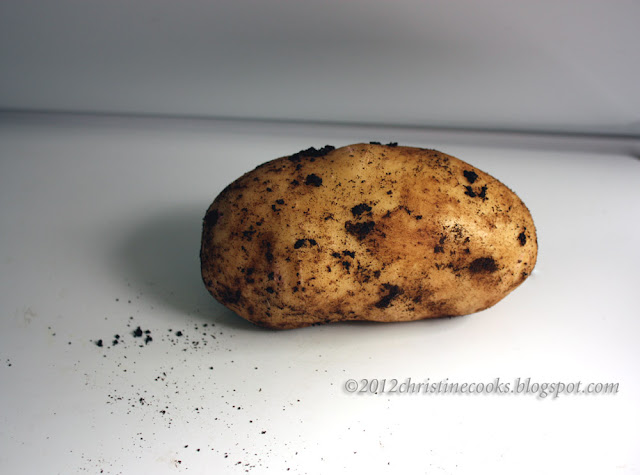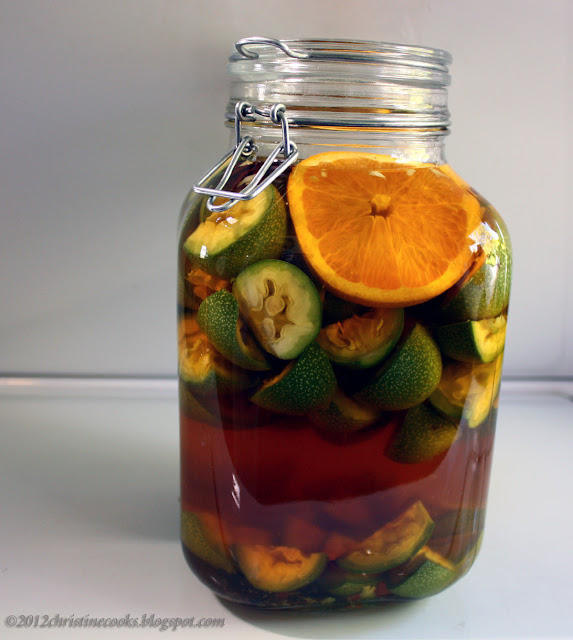Spicy chocolate. I love it.
In my kitchen it usually finds its way into a cafe mocha which I share with Mr CC. But not this time.
This time I wanted to share the zingy chili-enhanced chocolaty taste of this stuff with you all, and it had to be ice cream. It doesn't disappoint.
 |
| Chocolate ice cream base |
Now I'm entirely aware that I have a penchant for putting booze in my ice cream. I like the process of figuring out which small amount of alcohol might enhance a frozen dessert. Makes me feel like a bit of a scientist.
But if alcohol in ice cream doesn't float your boat, please feel free to omit it. It won't make the end result be any less delicious. And, of course, do not add it if you're going to be serving this to children.
That said, if you've no aversion to booze in your ice cream, let me tell you that using a tablespoon or two of really good bourbon here deepens the chocolate flavor, rendering a mysterious smokiness to the spice notes.
This recipe, adapted from an ice cream I made
here (and can one
adapt their own recipes?), comes together very quickly. It needs an overnight chill in the fridge so plan ahead.
 |
| Spicy Chocolate Ice Cream |
Christine's Recipe for Spicy Chocolate Ice Cream
makes enough to densely pack a 32-ounce container
Ingredients:
- 4 egg yolks
- 1/2 cup sugar (I used 1/3 cup Splenda-sugar blend)
- 1/2 cup sweetened cocoa powder (I used Dagoba's Xocolatl drinking chocolate)
- Pinch sea salt
- 2 cups 2% milk
- 1 teaspoon good vanilla such as Bourbon-Madagascar
- 1 cup heavy cream (whipping cream)
- 2 tablespoons bourbon (optional), I used Maker's Mark)
Preparation:
Using a hand held mixer or stand mixer, blend together the egg yolks, sugar, cocoa powder and salt until it is uniformly smooth and thickened.
Using a 2-quart saucepan, bring the milk to just under a simmer over medium-low heat. It will be hot enough when small bubbles form around the sides of the pan.
With the mixer running on low, slowly pour the hot milk into the egg mixture, blending thoroughly. Pour this back into the saucepan and heat gently on low, stirring constantly, until the mixture thickens and coats the back of a spoon.
Remove from the heat and strain into a clean glass container. Allow to cool for about 10 minutes before stirring in the cream, vanilla and bourbon (if using).
Refrigerate overnight or for at least 6-8 hours until well chilled.
Stir thoroughly to re-mix before adding the chilled custard to your
ice cream maker.
Process according to the manufacturer's directions. It will be soft set in about 25 minutes.
Pack into a 32-ounce container (large yogurt containers are perfect for this), cover with a piece of plastic wrap before snapping the lid on, and freeze for one to two hours before serving.
The links within this post go to my
Amazon Store (which I plug every now and then) where I list kitchen tools, gadgets, small appliances, herbs, spices and food products (as well as bourbon), cookbooks and my cameras, all of which you will find me using in my kitchen. I do not list products that I haven't used or do not own. Buying products from my Amazon store returns pennies to me so I can buy more kitchen stuff.
Also, Dagoba did not approach me to feature them here and I have not sought nor have I received remuneration for doing so. I sometimes feature products that I use because I like them and feel them worthy of sharing. That's all.



























